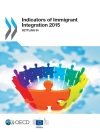This book is a systematic investigation of Korean cultural wave in South Asia, discovering and analysing the dynamics of fandom, mechanism of media industry and growing phenomena of Korean culture in this part of the world. This is one of the very first academic volumes in South Asia that examines cultural politics, language and literatures of Korea in a regional location when there might be some on examining the political and diplomatic relations divorced from socio-cultural interactions. It focuses on three major aspects: identity formation in the age of digital culture, fandom and aspiration in the wake of subculture, and transcultural flow in South Asia. Through these thematic indicators and empirical instances the volume explores the modes of transcultural flow vis a via the global cultural flow. The patterns and processes of identity construction transformed among the teenagers and youths in the realm of digital media and embodying the Korean cultural elements. The book will contribute in the area of media and cultural studies, global culture and politics, arts and humanities, social sciences and area studies.
Chapter 1 is available open access under a Creative Commons Attribution 4.0 International License via link.springer.com.
Tabla de materias
Section 1: Fandom and Youth.- Chapter 1 Looking at Fan Identity: The Bangladeshi K-pop Fan.- Chapter 2 Korean Dramas in India – Viewership, Aspirations and Consumerism: A Reception Study among Indian Youngsters.- Chapter 3 Youth and popular culture: Korean Wave in India’s North East.- Chapter 4 The ‘hallyu’ fandom in and around Kolkata: an ethnography of the affective and listening experiences of k-pop fans.- Section 2: Digitalization and Sub-Culture.- Chapter 5 Fandom, Mediated Culture and Re-imagining Identity: Exploring the Hallyu Wave in South Asia.- Chapter 6 Reading K-Pop Memes on Social Media through a Gendered Perspective: The Case of Darjeeling and Kalimpong.- Chapter 7 Understanding Korean Wave through the lens of BTS fandom in India: A Study of Thematically Analyzing the BTS’ Music Content and Response of Indian Fans to BTS’ Music.- Section 3: Glocalization and Cultural Adaptation.- Chapter 8 Adapting Korean Cinema in Indian Way.- Chapter 9 Spinning The ‘K’ yarn: the thriving media cottage entrepreneurship of Mizoram.- Chapter 10 From the reel to the real: a sociological analysis of Korean dramas.- Chapter 11 The Hallyu Phenomenon in Sri Lanka: Investigating the Socio-cultural Dynamics.
Sobre el autor
Ratan Kumar Roy is a Research Fellow at the Centre for Culture, Media & Governance, Jamia Millia Islamia, New Delhi, India. He was a residency research fellow in Asia Culture Centre, Korea, from July-November 2018. He received Doctoral award from the Department of Sociology, South Asian University (A University Established by SAARC Nations), New Delhi. He worked as a television journalist in Bangladesh before starting his doctoral research on the relation of audiences and television news in Bangladesh. Dr. Roy’s research interests are digital media politics, media culture, anthropology of media, media: gender and child rights, visual culture, mediated social movement, cultural politics in South Asia. He is the co-editor of SWAN reports on the Status of Women in Media in South Asia 2020.
Biswajit Das is Professor and founding Director of Centre for Culture, Media & Governance, Jamia Millia Islamia, New Delhi, India. He has over three decades of teaching and research experiences in the field of theory, method and history of Communication in India. Prior joining the centre, he worked with national and international agencies in conducting communication research and training.












